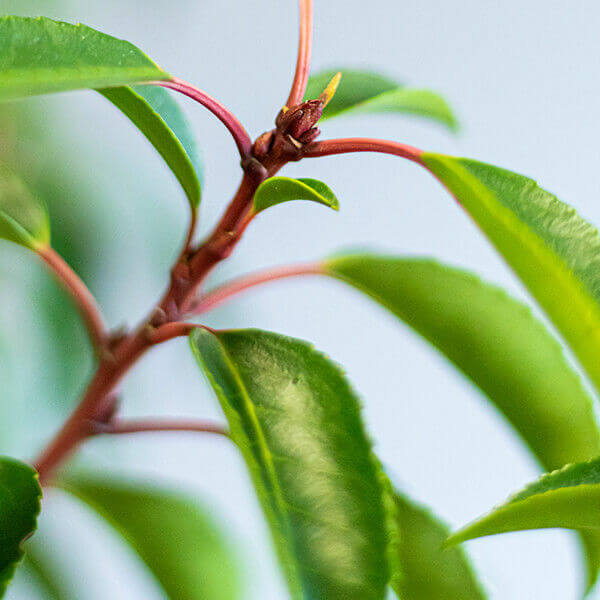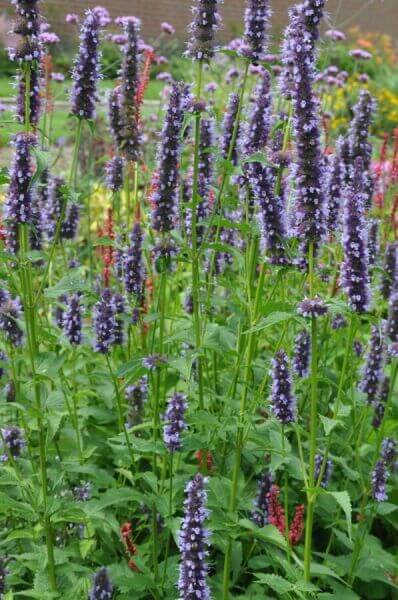Hedging Plants For Wildlife Friendly Gardens
Hedging Plants For Wildlife Friendly Gardens
Blog Article
Best Hedging Plants For Softening Walls
Improve your garden's attraction with lavish hedge ranges such as Yew (Taxus), Thuja, Laurel, Photinia, and Bamboo, commemorated for their structural stability and ecological benefits.
Yew and Thuja supply evergreen coverage and winter strength, while Laurel offers fast growth and broad, fragrant leaves.
Photinia includes seasonal beauty with its vibrant red foliage, and Bamboo provides a low-maintenance, peaceful ambiance.
These hedges improve air quality, minimize sound, and create tranquil, personal spaces.
Appropriate planting, spacing, and maintenance ensure energetic development and environmental harmony.
Explore how these lavish varieties can raise your garden's beauty and wellness.
Secret Takeaways
Transform Your Garden With Lush Hedge Varieties
- Select Yew for its thick, evergreen development and unequaled durability.
- Choose Laurel for its quick development and broad leaves, ensuring quick privacy.
- Select Photinia for its lively seasonal foliage, which turns a striking dark red.
- Make use of Bamboo for a low-maintenance, winter-hardy hedge with visual appeal.
- Area plants 2-3 per meter and prune regularly for optimal growth and health.
Popular Hedge Plants
When transforming a garden with lush hedge varieties, it's important to consider popular hedge plants such as Yew, Thuja, Laurel, and Photinia due to their distinct qualities and advantages.
Yew (Taxus) is extremely esteemed for its longevity and dense, green growth, making it a prime choice for enduring landscapes.
Thuja is noted for its evergreen foliage and robust winter season strength.
Photinia includes seasonal vibrancy with red leaves that darken with time, developing vibrant visual appeal.
Laurel offers rapid growth and aromatic, broad leaves, suitable for quick privacy.
Furthermore, Bamboo is an exceptional choice for ambiance, offering a low-maintenance, winter-hardy option that enhances the garden's visual with its elegant, swaying walking sticks.
These selections accommodate a variety of horticultural needs and preferences.
Benefits of Garden Hedges
Garden hedges use a multitude of advantages, making them an important addition to any landscape. These natural barriers are affordable to execute and offer significant wind protection, enhancing air blood circulation and contributing to noise decrease. The dense foliage of hedges like Thuja and Beech makes sure privacy by blocking exposure, creating a secluded and peaceful environment.
Hedges also play a vital role in microclimate regulation, providing a stable environment that fosters plant development and reduces temperature level variations. Their intricate leaf structures filter contaminants, improving air quality and adding to a healthier garden ecosystem.
Furthermore, hedges excel in sound reduction, absorbing and deflecting acoustic waves to lower ambient sound levels. This double functionality of providing both acoustic and visual privacy boosts the overall serenity and aesthetic appeal of any garden.
Planting and Maintenance Tips
For an effective hedge, meticulous preparation of the planting location is vital. Guarantee the soil has appropriate pH and drain to support strong root development.
Space the plants properly for the picked species. Water the hedge often throughout its preliminary growth phase, adjusting as required with seasonal modifications.
Implement a methodical bug control and illness prevention technique, utilizing chemical or natural treatments when necessary. Routinely examine for aphids, termites, and fungal infections.
Apply mulch to maintain wetness and suppress weeds. Seasonal pruning promotes dense growth and air flow, vital for plant health.
Following these standards will assist you cultivate a lively, well-maintained hedge that enhances the charm of your garden.
Spacing and Trimming Guidelines
Spacing and Trimming Guidelines
Appropriate spacing and trimming are essential for cultivating healthy, visually appealing hedges. Sufficient spacing guarantees each plant receives sufficient nutrients, light, and airflow.
Follow these guidelines for optimal hedge upkeep:
- Spacing: Position hedge plants 2-3 plants per meter to encourage robust development.
- Pruning Methods: Routine pruning is important for maintaining desired hedge height and shape. Trim brand-new development in summer and cut back older wood during winter.
- Seasonal Care: Change cutting schedules and approaches according to seasonal requirements to guarantee plant health.
- Hedge Height: Routinely display and cut to preserve the preferred hedge height and achieve uniform aesthetics.
Abiding by these actions will ensure your hedge thrives, boosting both the appeal and performance of your garden.
Choosing the Right Hedge
Choosing the Right Hedge
Picking the suitable hedge involves examining elements such as mature height, foliage density, and ecological durability. Successful hedge plant choice requires comprehending each types' growth attributes and site-specific versatility.
For instance, Yew (Taxus) Browse this site provides excellent durability and dense development, while Thuja is notable for its winter strength. Furthermore, considering upkeep requirements is crucial; fast-growing species like Laurel or Privet need routine trimming, whereas low-maintenance alternatives like Bamboo or Ivy might be preferable for those looking for very little upkeep.
Ecological factors such as soil type, light schedule, and moisture conditions must likewise direct the choice process. This cautious technique ensures the selected hedges will thrive, offering both visual and functional advantages to the garden landscape.
Delivery and Planting Guidance
To guarantee your hedge plants grow, they must be provided by specialized carriers and planted promptly upon arrival.
Follow these necessary steps for successful planting:
- Soil Preparation: Improve the soil with raw material to enhance drainage and nutrient material.
- Planting Depth: Create a trench two times the width and equivalent to the depth of the root ball.
- Watering Methods: Water completely after planting, keeping the soil consistently damp but not saturated.
- Mulching: Apply a layer of mulch to retain moisture and reduce weeds.
Consumer Assistance and Service
Offered the crucial role of timely support in horticultural pursuits, our client assistance group is readily available 6 days a week through telephone, e-mail, and social media to offer professional recommendations and quickly attend to any issues. Their devotion to fast action times makes sure consumer fulfillment by dealing with inquiries connected to plant health, optimum planting approaches, and maintenance schedules.

Communication Technique
-------------------
Within 24 hr
This comprehensive support system, strengthened by an outstanding 9.3/ 10 consumer ranking, highlights our dedication to enhancing the gardening experience for every client.
Frequently Asked Questions
For How Long Does It Take for Hedge Plants to Establish?
Hedge plants typically require one to three years to become completely established, with the precise duration varying by species and growing conditions.
Effective care during this crucial period is important for robust growth. Consistent watering, vigilant weed control, and appropriate fertilizer application are pivotal in promoting strong root advancement.
For example, fast-growing types like Laurel may establish faster, while slower-growing varieties such as Yew may take longer. Persistent upkeep accelerates the establishment procedure, leading to dense and healthy hedges.
What Are the Finest Hedge Plants for Personal Privacy?
The question of the very best hedge plants for personal privacy includes assessing evergreen and deciduous choices.
Evergreen hedges like Thuja, Laurel, and Cypress supply year-round coverage, ensuring continuous personal privacy.
On the other hand, deciduous hedges such as Beech offer seasonal privacy, shedding leaves in chillier months.
Secret upkeep pointers for personal privacy hedges consist of routine cutting, fertilizing in spring, and proper spacing-- generally 2 to 3 plants per meter.
Furthermore, consistent watering and persistent weed removal are important for promoting healthy, thick growth.
Can Hedge Plants Draw In Wildlife to My Garden?
Yes, hedge plants can draw in wildlife to your garden by offering vital benefits like shelter, food, and nesting sites, thus enhancing local biodiversity. For example, yew, holly, and laurel are excellent for attracting birds, while ivy supports a range of pests.
Nevertheless, it is necessary to keep in mind that there are some disadvantages, such as increased maintenance to handle insects and routine maintenance. Thoroughly choosing and maintaining hedge varieties can help stabilize these drawbacks and advantages, eventually promoting a vibrant and sustainable community in your garden.
Are There Any Blooming Hedge Plants Available?
Yes, there are flowering hedge plants readily available that can enhance the charm of your garden.
For example, Elaeagnus, also called Olive Willow, produces fragrant white flowers in the fall, including a touch of beauty.
Photinia, another popular choice, showcases dynamic red leaves that mature into a rich green, creating a vibrant visual effect throughout the seasons.
To guarantee these plants thrive, it's vital to practice appropriate pruning strategies and seasonal maintenance, such as cutting new development in the summertime and cutting back in the winter.
These measures will help keep the health and visual appeal of your blooming hedges.
How Do I Avoid Pests in My Hedge Plants?
To avoid bugs in hedge plants, employ natural bug control approaches and keep appropriate hedge care. Present advantageous bugs like ladybugs, which take advantage of damaging bugs, to develop a well balanced ecosystem.
Regularly inspect your hedges for indications of problem and quickly get rid of any afflicted parts to avoid the spread. Guarantee the health of your hedges by applying well balanced fertilizers and supplying adequate water.
Utilize mulching to retain soil wetness and correct spacing to minimize plant stress and promote robust growth. These practices collectively assist in minimizing pest issues and maintaining a healthy hedge.
Conclusion
In essence, picking the ideal hedge ranges such as Yew, Thuja, and Laurel can transform any garden into a tranquil sanctuary. These plants offer year-round greenery, enhance visual appeal, and deal practical advantages like sound reduction and wind protection.
Correct planting methods, accurate spacing, constant watering, and seasonal cutting are important for optimal development.
Reputable delivery services and skilled client assistance guarantee a seamless experience from purchase to planting, making it easier than ever to elevate your outdoor area.
Garden hedges offer a wide range of advantages, making them a valuable addition to any landscape. These natural barriers are cost-effective to execute and provide considerable wind protection, improving air circulation and contributing to sound reduction. The dense foliage of hedges like Thuja and Beech makes sure privacy by blocking visibility, producing a remote and peaceful environment.

Pruning Methods: Regular pruning is important for keeping wanted hedge height and shape. Trim new development in summertime and cut back older wood during winter season.
Report this page